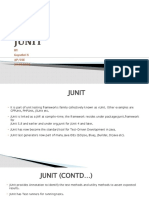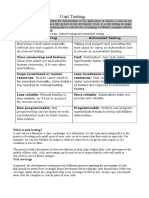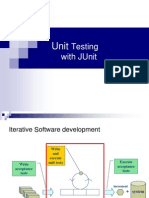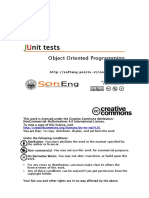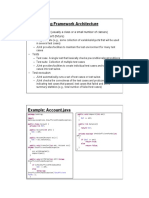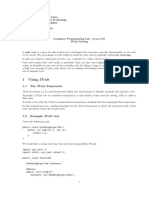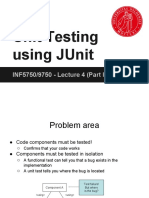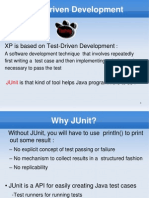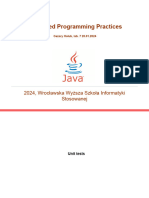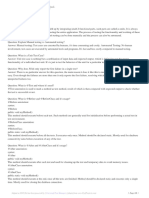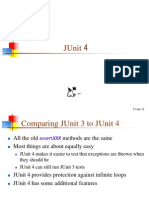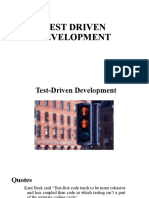0% found this document useful (0 votes)
155 views2 pagesJunit Notes
JUnit is a Java unit testing framework with the latest version being 5.11.x, which introduces a modular structure compared to the monolithic JUnit 4. Key concepts include test cases, fixtures, test suites, and various annotations for organizing tests. The document also outlines a simple calculator implementation and its corresponding test cases using Test Driven Development (TDD) principles.
Uploaded by
SureshCopyright
© © All Rights Reserved
We take content rights seriously. If you suspect this is your content, claim it here.
Available Formats
Download as TXT, PDF, TXT or read online on Scribd
0% found this document useful (0 votes)
155 views2 pagesJunit Notes
JUnit is a Java unit testing framework with the latest version being 5.11.x, which introduces a modular structure compared to the monolithic JUnit 4. Key concepts include test cases, fixtures, test suites, and various annotations for organizing tests. The document also outlines a simple calculator implementation and its corresponding test cases using Test Driven Development (TDD) principles.
Uploaded by
SureshCopyright
© © All Rights Reserved
We take content rights seriously. If you suspect this is your content, claim it here.
Available Formats
Download as TXT, PDF, TXT or read online on Scribd
/ 2



















